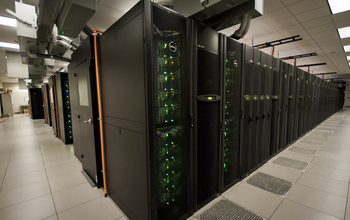Multimedia Gallery
Wide view of Stampede supercomputer
The Stampede supercomputer, located at the University of Texas at Austin's Texas Advanced Computing Center (TACC), has already enabled research teams to predict where and when earthquakes may strike, how much sea levels could rise and how fast brain tumors grow.
Dedicated in March 2013, Stampede is now the most powerful and capable of the 16 high-performance computing, visualization and data analysis resources within the National Science Foundation's (NSF) Extreme Science and Engineering Discovery Environment (XSEDE). XSEDE is NSF's investment in an integrated, advanced cyberinfrastructure that will empower America's scientists and engineers to interactively share advanced computational resources, data and expertise in order to further research across scientific disciplines.
Researchers from any U.S. open science institution can apply to use Stampede. The system annually will support more than a thousand projects in computational and data-driven science and engineering from across the United States. Its design efficiently supports a large, diverse workload and accommodates the needs of large- and small-scale simulations, visualizations and new forms of data-intensive science.
Stampede is supported under NSF grant ACI 1134872.
To learn more about Stampede, see the NSF press release NSF-Supported Stampede Opens the Gates of Advanced Computation to Thousands of Research Teams. (Date of Image: September 2012 to August 2013)
Credit: Texas Advanced Computing Center
Images and other media in the National Science Foundation Multimedia Gallery are available for use in print and electronic material by NSF employees, members of the media, university staff, teachers and the general public. All media in the gallery are intended for personal, educational and nonprofit/non-commercial use only.
Images credited to the National Science Foundation, a federal agency, are in the public domain. The images were created by employees of the United States Government as part of their official duties or prepared by contractors as "works for hire" for NSF. You may freely use NSF-credited images and, at your discretion, credit NSF with a "Courtesy: National Science Foundation" notation.
Additional information about general usage can be found in Conditions.
Also Available:
Download the high-resolution JPG version of the image. (13.1 MB)
Use your mouse to right-click (Mac users may need to Ctrl-click) the link above and choose the option that will save the file or target to your computer.



